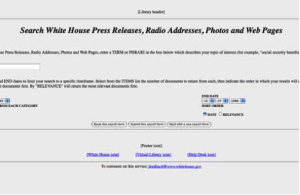When talking about signatures there are several different styles of signatures people refer to. The first is the one we are all the familiar with – wet signatures.
A wet signature is created when a person physically puts their mark a document. In some cultures this is done by writing a name in a stylized cursive format or using a seal. The name wet implies that the signature was made with ink or wax, it might also indicate that the signature is “fresh” and the ink has not yet dried. Probably the most recognizable wet signature is that of John Hancock.
 |
 |
These sorts of signatures have been in use for as long as we have had a written language (and maybe even before). We do know that since the sixth century forensic document analysis has been used to verify the authenticity of these signatures.
Dry signature is a term used as a way to describe both a wet signature where the “ink has dried” and as a higher level description that captures many other forms of non-ink based signatures (such as electronic and digital signatures).
Electronic signatures for the most part can be thought of as a “synthetic wet signature”. These signatures are produced as their name implies electronically and most commonly try to look as much like a wet signature as possible. Services such as HelloSign and Pandadoc are examples of services that leverage these synthetic wet signatures. With these services you upload a document, they convert it to a PDF and then you insert what is ultimately a picture of something that resembles your wet signature. These pictures of your signature are typically produced by digitizing your signature, uploading a copy of your signature or by the use of varied cursive typography.
With electronic signatures this “picture” intended to make both the signer and recipient of a signed document “feel” like the ritual they are undergoing is equivalent to that of the the traditional paper process that is traditionally used.
That said ones synthetic wet signature very rarely reflect a person’s real wet signature so this is really more about symbolism than anything else. One’s ability to prove a that it was really “you” who signed with an electronic signature is really limited to a statement from the facilitator of the signing that essentially says:
“I saw someone on this IP address who was able to access this email address and they asked us to insert this picture in this document – trust us.”
There is no concept of legal identity involved. For most “electronic signatures” there is also no verifiable proof of the claims from the facilitator about the signature. Anyone could trivially re-create a document or log that says something entirely different and it would be very difficult to prove which one represented the truth.
In this log the question of what was signed is captured by embedding a hash of the document that is being “signed”. It is important to understand that this hash alone does not capture what was seen by the user, it simply captures a fingerprint of a binary file. To understand this point just consider how the same website renders differently on Chrome vs Internet Explorer..
If the document were to be modified by someone after the fact one would need to rely on the database of the facilitator to determine what really happened.
In the event such a signature were to be questioned in a court of law it is for the most part left to a case of he-said-she-said. At best you could ask the facilitator to be a witness in the court case to attest to their operational practices and why their logs associated with the activity are most likely true.
Digital signatures are also technically “electronic signatures” but they are notably different in that they leverage strong cryptographic techniques to make it so that any changes to the document are detectable. If only the signer holds the private key that is used to sign the document it is mathematically provable that only the signer could have placed that signature on the document.
For the same symbolism reasons above these signatures will often also contain a synthetic signature.
The question of identity in electronic signatures is most commonly handled via X.509 certificates where a certificate authority goes through a process to verify the identity of the signer and issues them a digital certificate that states “I verified the following information about the holder of this private key”. The information in the certificate may be as little as their email address or as much as their legal identity and physical address.
The nice thing about this approach is that neither the document signing facilitator nor the certificate issuer can pretend to have signed a document — they do not have the private key.
It is still important to ensure adequate logs are maintained to prove what was presented to the user when they placed their digital signature on the document but this defense of this signature is much easier given there is less trust being put on the facilitator to act responsibly.
Hybrid signatures or notarized electronic signatures represent a mix of “electronic signatures” and “digital signatures”. This is what DocuSign and EchoSign do. They apply a the synthetic wet signature for the user and append a log saying “trust us this is what we saw happen” but they sign the document and that log with their own digital signature acting as a notary of sorts.
This is far superior to what the pure electronic signature providers provide because it in the event there is a question about the validity of the signature there is less question of the integrity of the logs.
For example consider the case where a pure electronic signature was put into question; one could simply argue the service provider’s database was compromised and any data within it was suspect.
With that said it is far better to use a pure digital signature approach as it removes even more arguments about the validity of the signature.



